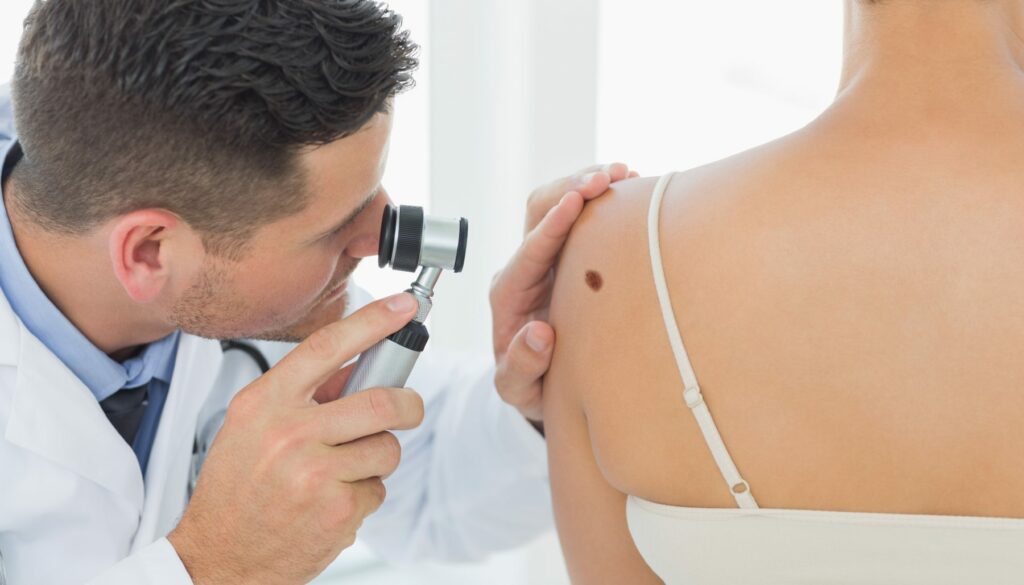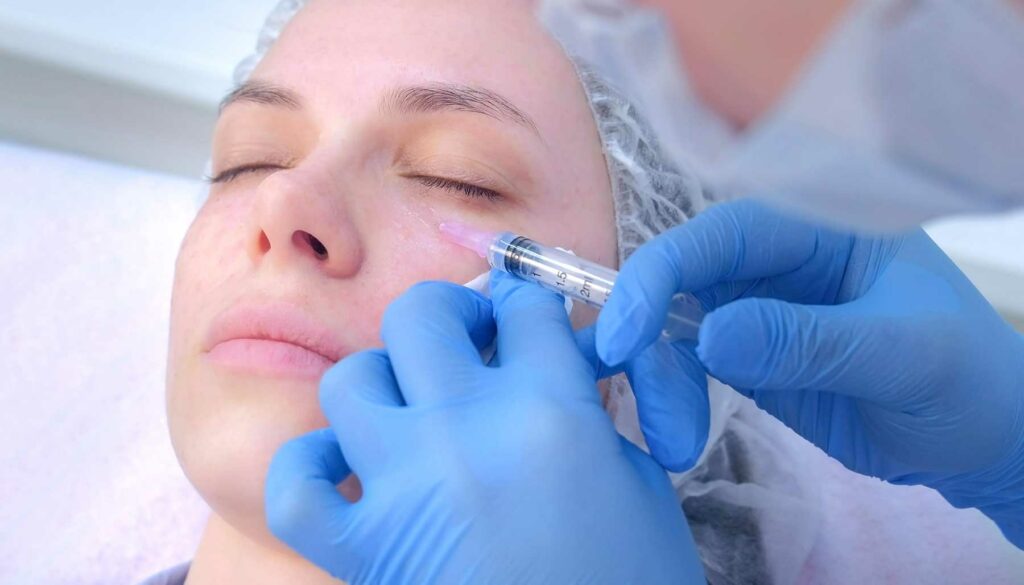Okay, real question: when is the last time you checked in with your dermatologist?
If it’s been a really long time – or you haven’t ever been to see a dermatologist – it might be time to make an appointment.
Your skin is a pretty big deal, and I mean that literally. It is actually the largest organ of the body. It is also one of the most important parts of your body! That’s because it forms a protective barrier between the external environment and your internal organs. And although it can be harmed with scrapes, cuts, burns, and more, it also heals itself. It’s pretty amazing!
Just like with any other organ of the body, the skin is susceptible to infections, diseases, and other issues. It’s just that sometimes, the symptoms are right in front of our faces. Of course, sometimes the symptoms might not seem like that big of a deal or even related to deeper concerns at all. When was the last time you had dry skin? Not a big deal, right? Except, it might be. There are some symptoms that we shouldn’t just write off.
Now, not everything warrants a trip to the dermatologist. It’s not like those visits are free or anything, either. But there are certain instances that should be a red flag. If you see these particular issues and they aren’t going away, it might be time for that professional opinion.
A dermatologist will know if something is a serious concern or not. Hey, that’s why they spent all that extra time in school! They will also be able to prescribe something stronger than the average over-the-counter medication in the event those store-bought solutions haven’t touched your symptoms.
Even bigger, some skin issues could be a sign of something life-threatening, like cancer. And when it comes to issues like that, time is of the essence. The earlier you catch it, the better your survival rate.
So, check out this list of symptoms. If you see something familiar, do yourself a favor and make an appointment with your dermatologist!
A Mole or Patch of Skin That Has Changed

It’s likely that you have heard this one before, but it still needs to be mentioned because it is one of the more important things to look for. If you have a mole or patch of skin that has changed in color, shape, size, or symptom, it’s time to see a dermatologist. This also applies to new moles or other spots that have popped up. If it’s new or different, get it checked out!
Changes like these can be signs of skin cancer. Catching it sooner than later is imperative. The sooner you start treatment, the better the odds. Your dermatologist can also teach you how to do regular skin checkups and what to look for.
Shedding More Hair Than Usual

The average person sheds plenty of individual hairs throughout the day. It is part of the natural cycle of our hair. The number of strands you lose each day depends on factors like how thick or long your hair is. But on average, it’s normal to shed between 50 to 100 hairs a day.
If you have noticed an increase in shedding, it’s time to get it checked out at the dermatologist. They can properly diagnose any scalp disorders you may have. A dermatologist can start you on preventative treatments before it gets worse or restorative therapies to fix what’s already been done. Effective treatments will depend on what’s causing the hair loss.
Painful, Deep Blemishes That Don’t Go Away
Blemishes that are deep under the skin can be painful and persistent. Those large breakouts deep in your skin are known as cystic acne. It can result from a combination of bacteria, oil, and dead skin cells that get trapped in your pores. This is the most serious type of acne. Because of the severity, regular over-the-counter treatments aren’t strong enough.
If you are suffering from cystic acne, it’s time to see a dermatologist. They can prescribe the necessary medication to help clear your skin without causing further damage. It’s really the only way to get rid of these stubborn and painful bumps because they won’t go away on their own.
Itchy Skin That Doesn’t Go Away

Persistent skin irritation is enough to drive anyone mad. If you have itchy skin that just doesn’t go away, it could be more than just dry skin. Even without any hives, redness, or rashes present, itchy skin can be a symptom of something more.
It is easy to assume it is caused by the weather. But if over-the-counter creams and lotions aren’t doing you any good, it’s time to hit the dermatologist’s office for help. Itchy skin that just won’t quit could be a sign of a chronic skin condition. With a proper diagnosis, a dermatologist can prescribe the necessary treatment to make it stop.
A Lump or Lesion That Won’t Heal
The skin can sometimes develop a lump or lesion that might concern you. Much like some of the issues I’ve already mentioned, if it won’t heal on its own, it’s time to see a professional.
That’s because the most common type of skin cancer is basal cell carcinoma, and it usually shows up as a bump or lump with a rolled border. It can be skin-colored, red, or darker-colored. It might have a central indentation, and at times it might ooze, crust, itch, or bleed. If that sounds familiar and it isn’t going away, get to a dermatologist’s stat. This type of cancer does grow slowly, but if left untreated, it can grow into nearby tissue and even into the bone.
Constant Flushed Appearance on the Face
People get flushed from time to time. Whether it’s from a fever, embarrassment, exercise, or nervousness, flushed skin is often harmless and short-lived. It’s caused by a rush of blood to the face, which causes blood vessels to enlarge. It can be red all over or look blotchy or patchy. It can also affect the neck and upper chest areas.
However, if you have a flushed, red appearance and it’s recurring or won’t go away without explanation, it might be time to seek medical attention. If the redness is concentrated in the area of your nose and cheeks, it could be a sign of rosacea. But, perma-flush can also be a sign of other more serious issues, too.
Rashes or Hives That Won’t Go Away
If you inexplicably develop hives or a rash that refuses to go away, it’s definitely a sign to get checked out. And really, any strange irritation, itching, or burning – redness or not – that won’t clear up should get checked out. Over-the-counter medications might give you some relief, but if the other symptoms don’t go away, check in with your dermatologist.
Hives, rashes, redness, and irritation can be signs of an underlying condition. It could be contact dermatitis, an infection, a fungus, or even eczema. If there is any tenderness, swelling, or pus, get to the doc even quicker. These are signs of infection that need to get treated ASAP before the condition worsens.
Persistently Dry Skin

This one hits home for me. I suffered (and still suffer!) from perpetually dry skin. At first, it seemed pretty normal, except it never really went away. It wasn’t until later that an itchy, scaly patch showed up – and now I know I have the autoimmune disease psoriasis.
As it turns out, persistently dry skin can be indicative of a lot more than a need for moisturizers. Skin issues like psoriasis and eczema can make your skin more prone to dryness. However, other seemingly unrelated problems might cause dry skin, too. This can include diabetes, malnutrition, hypothyroidism, or kidney failure, among other issues.
Unwanted Scars From Blemishes or Scrapes
Dermatologists don’t just cover the medically necessary stuff. We can end up with scars left over from acne, surgery, illness, burns, and any other damage to the skin. Technically speaking, it won’t negatively impact our health to have scars. They are just the result of the body’s ability to heal itself. Scar tissue forms to repair damaged skin.
Just because it’s natural doesn’t mean you want it there, though. Sometimes we just don’t want the scars that get left behind, and that’s alright! Luckily, dermatologists are more than capable of helping you take care of unwanted scars.
Other Cosmetic Concerns

Aside from unwanted scars, other cosmetic concerns might include uneven skin tone, fine lines and wrinkles, dark spots, spider veins, sun damage, and more. Treatments for cosmetic concerns like these can range from prescription creams to chemical peels. Some might require injectables like Botox or fillers.
When it comes to treatments of the skin and seeing actual results, it’s always best to see a board-certified dermatologist for them. There are plenty of at-home devices that promise to rival professional results, but certain treatments should be done by an expert.













